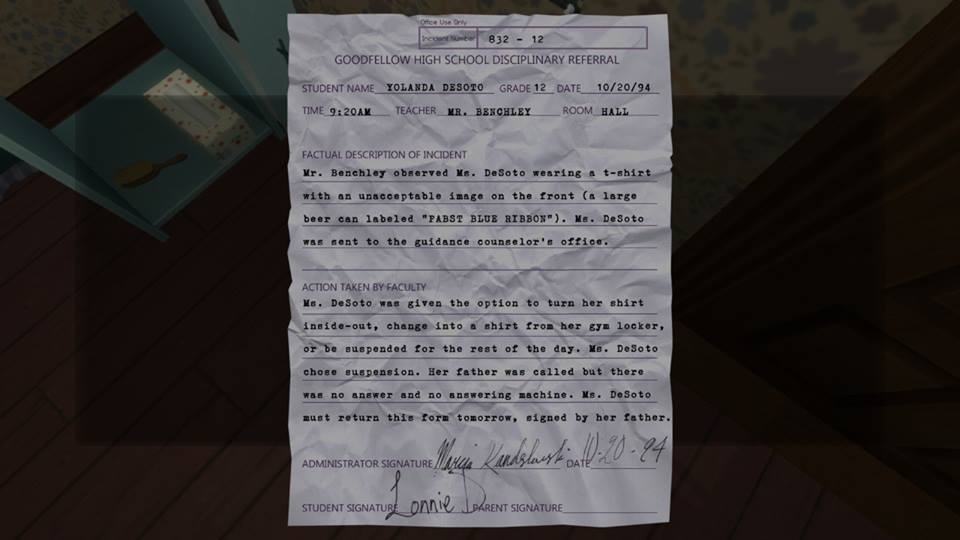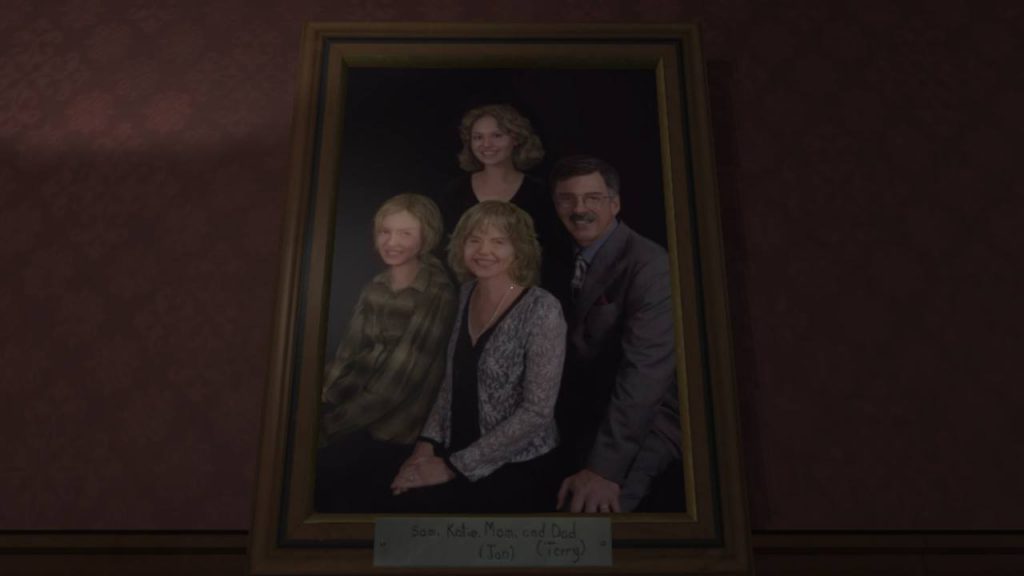Gone Home isn’t fun. It doesn’t ask you to solve any puzzles or complete any challenges. Instead, it asks you to simply look around a house. And because of this, Gone Home is able to tell you a story that is both heartbreaking and heartwarming, in a way no other medium is able to do.
Gone Home sees you play as Katie, who has just come home after a year travelling around the world, in the year 1995. On the front door, however, is a note by her 17-year-old sister, Sam, saying she has run away.
Only spanning a couple of hours, you’ll spend the entire game walking through the same house, going from room to room, trying to piece together what happened. There are a few instances of finding codes or keys to access new areas or finding hidden locations on the map, but they don’t test any spatial reasoning or logical thinking. They’re simply methods to block off certain areas until you’ve discovered enough to follow the story.
Searching for Clues

There is a series of “audio logs” from Sam that will play when you pick up certain items, which convey the most poignant parts of the story. However, it’s the supplementary material surrounding these plot points that make them so powerful in the first place.
You can find old tapes, notes, letters, and books in drawers, under couches, and even in the trash. You can find these in largely any order, and there are so many that even the most scrutinous players likely won’t find everything. Because of this, you construct what narrative you can based on what information you have.
Rest assured, the clues are neither too hard to find nor too vague to make sense, unlike many other games. If you keep a keen eye and don’t simply skim over all of the material, you should get the general picture.
In one of the most striking examples, you can check the voicemail at the beginning of the game. The first two voicemails don’t make any sense when you first hear them, but in one of the last moments of the game, you finally learn what those calls meant. This was definitely a tear-shedding moment, but similar instances of early setup and late payoff is also used for Gone Home’s jokes in much the same way.
There’s No Place Like Home

Originally created in 2013 using the engine for Amnesia as a basis, Gone Home isn’t particularly appealing to the eye. No object in the game is particularly striking, and the lighting has an unpleasant muck that it casts on everything.
The sound design, however, more than makes up for this. Set on a dark and stormy night, there’s a distant yet persistent pattering of rain, occasionally punctuated by thunder rumbling in the distance. Depending on which room you’re in, the acoustics of the rain changes, going a long way to make this feel like a real house in the middle of the woods.
But Gone Home wouldn’t have nearly the effect it did if not for its soundtrack. It uses gentle instrumentation only during its most emotional moments, which matches the bittersweet tone perfectly. Even though most of the game is without music, the few moments with it are magical.
In Your Home… On the Go?

Gone Home might not seem like a game that would be “perfect for the Switch,” the way many other games seem to be. It’s a short game that’s best in a single sitting, preferably somewhere dark and quiet.
I played the game under these conditions, but also entirely in handheld mode. Gone Home is a very intimate experience, and curling up in bed with the sound playing through earbuds was a far more intimate experience than sitting in front of a TV or even computer screen would be.
For the two hours spent in Gone Home, every minute detail tells part of a larger story. No other piece of media, let alone game, has had me burst out loud by reading an old homework assignment, make me cry by finding a post-it note, or be unabashedly heartfelt through a receipt.
Gone Home is a game that I’m still constantly thinking about days later, not because of any tricky puzzles or tough platforming segments, but because of the unique way it told a story. You can call it a “walking simulator.” I call it art.

Pros
- Unique storytelling
- Touching story (they’re two different things!)
- Enchanting soundtrack
- Doesn’t overstay its welcome
Cons
- Outdated and ugly graphics
- Not for those looking for a traditional “video game” experience
Conclusion
Gone Home is a non-traditional game in which you walk throughout your (admittedly large) house after being gone for over a year, trying to find out where everyone has gone. Through a series of audio logs and contextual clues, you will slowly piece together what happened to the members of your family. While the already unimpressive graphics are even more grating in 2018, the Switch version preserves the same heart of the original through its powerful story and soundtrack.



